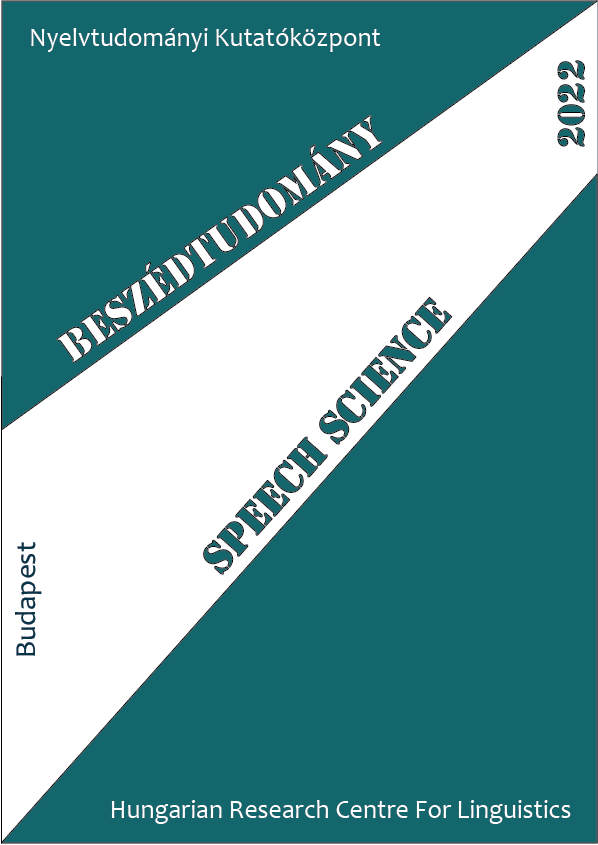A dajkanyelv tagolódása 6 hónapos csecsemőkhöz szóló történetmesélésben
Absztrakt
The occurrence of pauses serves as an aid for children with speech parsing and, hence, language acquisition. Thus, understanding temporal patterns of infant-directed speech (IDS) is of crucial importance. However, there is only sparse data available in the literature on the frequency of pauses and their relationship with clause boundaries.
In this study, we investigated the semi-spontaneous speech of 14 mothers – native speakers of Hungarian – directed to their 6-month-old infant. First, mothers were asked to tell a story based on pictures to an adult, then to their child. Although they had to incorporate prescribed sentences into their stories in the experiment, only the spontaneous parts of their speech were considered for the present work.
The results have shown that the articulation rate of IDS was generally lower, and the clause and IPU durations were higher than in the case of adult-directed speech (ADS). The duration of pauses was largely affected by whether they occurred within or between clauses in both registers. Although the pause duration between clauses did not show substantial differences between the two registers, the pauses within clauses were found to be longer in IDS than in ADS. Moreover, pauses appeared more frequently at clause boundaries than within the clauses in both registers, but this difference was more pronounced in IDS. The results may drive attention to the observation that the inter- or intra-clause position of pauses affects their duration and frequency in infant-directed speech.




